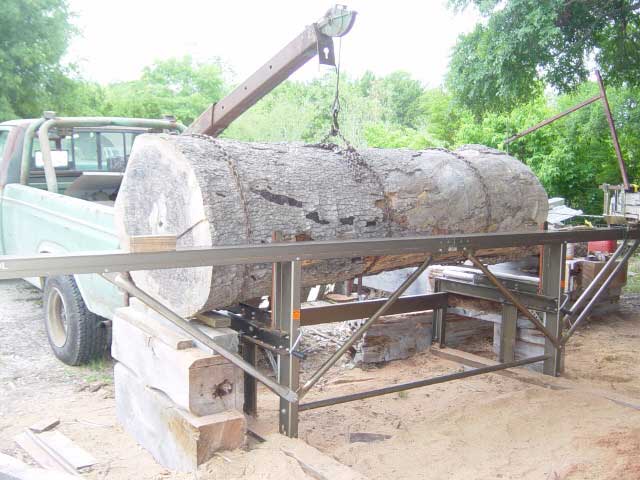Question
Is it possible to kiln dry freshly sawn, very wide (16-18 inch) 1 " boards with minimal cupping? By minimal I mean I want to be able to plane the wide boards down to 3/4 or 5/8 after it's dried to 6%. I had some trouble recently because of a kiln malfunction and human error combined. I want to know I can do this and I want to try again without losing so much money. Any help would be very much appreciated.
Forum Responses
(Sawing and Drying Forum)
From contributor K:
There is no reason for it to cup very much at all. I've dried 22" wide oak in my Nyle DH kiln and it stayed dead flat. Do you have good stickers and good weight? Are the trees stressed from lean/reaction wood?
Cupping is usually the result of too slow drying, correct Gene? Too slow messes things up and too fast messes things up. You need to know the conditions inside your kiln, temp, humidity, and have proper air velocity over the stacks. Oak is something we are careful with and weigh our sample pieces every day because it is easy to take off too much moisture in the beginning. Max 3% MC per 24 hours if I remember or you risk honey combing and case hardening. Then it gets progressively harder to remove the moisture so as Gene has mentioned I think you are pretty safe from defects once you are under 30% MC? Iím not sure when the cupping occurs however on the slow dry. I've had trouble with this in hard maple.
We also didn't have enough gap between wall and lumber stack. I was told re-wetting took place. I was also told it dried too slow and I can see how that is probably true, but I don't understand how that causes cupping. I would think drying too fast would suck the moisture out of one face more than the other and cause the cup. Don't get me wrong, I trust the professionals, I'm just curious about the science of it. The moisture didn't drop till week 3. The stuff was in there for a total of 30 days. We ran just the fans for 1 day to equalize but some wood is 5% and some is 15%. The oak is cupped and buckled severely.
So anyway, this whole thing made me nervous and made me question if it was even possible to kiln dry fresh sawn wide oak in 30 days. I needed someone who's done it to restore my confidence a little. So thanks for that. This hurt my wallet because I run an honest operation and wanted to make it right with the customer.
Unfortunately, wide pieces almost always come from near the center of the tree. White pine is a low shrinking species, so cup will not be really large. So, with fast drying (which gets dry fibers on the outside which are twice as strong as wet fibers) will give you the best chance, but your chances of perfectly flat lumber are not really high.
If you rip the piece down the middle and then dry the two pieces and glue them back together, the two matching pieces, minus the small amount of saw kerf can be flat and look as though they are one piece.
